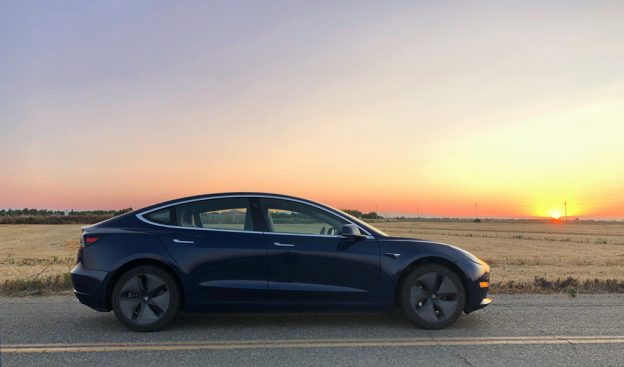July 2019. California.
We purchased a solar power system to produce and offset the electricity we use in our house and to charge our Model 3. Our primary goal was to produce as much electricity as we used each year. This post describes how well our solar system meets our needs.
This is the second of a 3 part series. Read Part 1 here. When we decided to get solar panels we hoped to produce as much electricity as we used. So our first task was figuring out how much we used for our home and how much we would use to charge an EV. Then we crossed our fingers and hoped that the space on our roof would fit the panels we’d need, and that the project budget wouldn’t break the bank.
Determining Baseline Home Electricity Use
To determine how much we would need to cover home electricity use I averaged our annual usage over three years. Data from our utility showed that we averaged 3650 kWh per year – about 305 kWh per month. We bought our first EV in 2013, but charge that car at work so our electricity use from 2013-2015 represents baseline household usage.
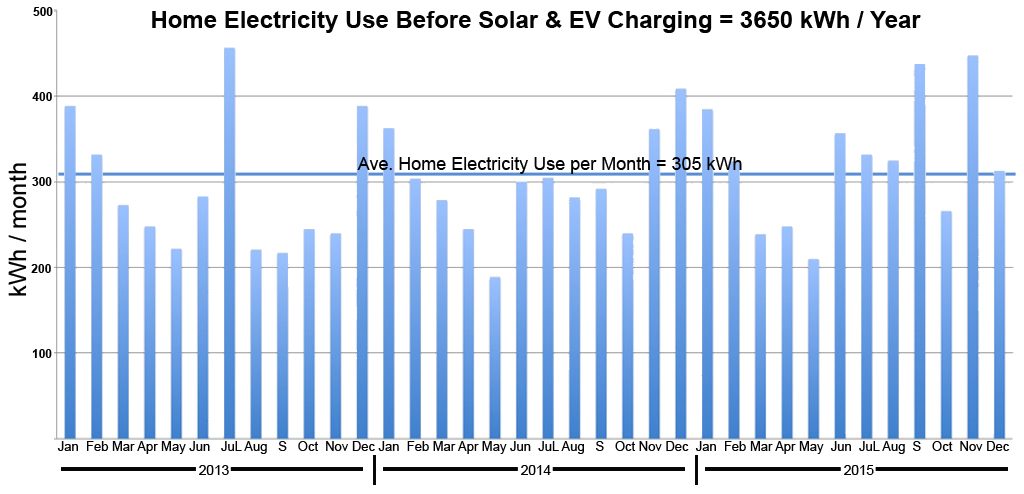
Our home electricity use is a bit lower than average for several reasons. 1) we heat our home and hot water with natural gas so that shifts energy use over to gas; 2) The weather in our area helps us lower AC use. We have hot dry summers, temps over 100°F are common. But the temperature drops 30-40 degrees at night. So each night as soon as the temperature outside drops lower than the temp inside the house we shut off the AC, open the windows, and turn on a fan. Natural cooling saves energy and money; 3) Ages ago we replaced our lights with compact fluorescent bulbs, and as the CFL bulbs died replaced them with LEDs. Home lighting is nearly 10% of home electricity use, so every bit helps.
Determining EV Electricity Use
To deterimine how much electricity we’d need to charge our EV at home, I calculated how much electricity was used to charge our first EV, a 2012 Toyota Rav4 EV. That car used an average of 4700 kWh (from the wall) to drive 14-15,000 miles a year. Ten percent of that energy came from DC charging on road trips, so I estimated that our EV would need about 4300 kWh a year, from the wall, for home charging. Combining home use (3650 kWh/year) wth projected EV use (4300 kWh/year) gave us a target for solar PV production of 8000 kWh per year.
We reserved our Model 3 in March 2016 and picked it up in April 2018. We charge that car at home every night as described in an earlier post.
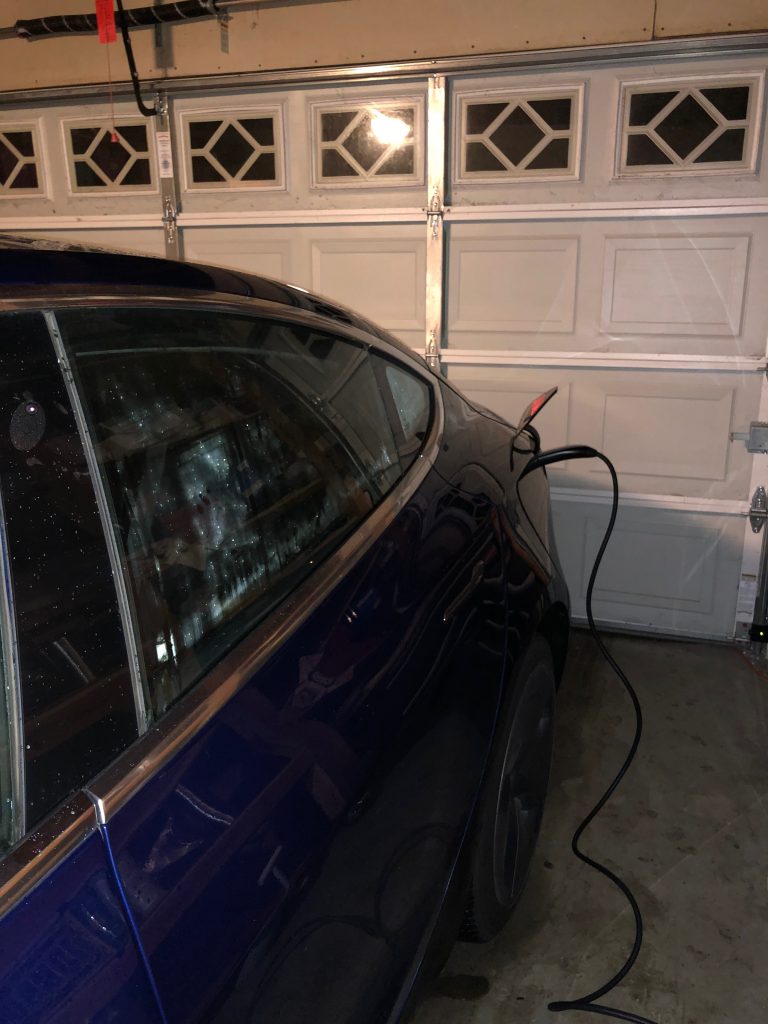
Solar System Specs
Our solar power system was built in two stages, as described in the Part 1 post. The system has 21 panels arranged in 3 arrays designed and installed by SolarCity/Tesla to meet our projected needs. The full system began producing power for us in late 2017.
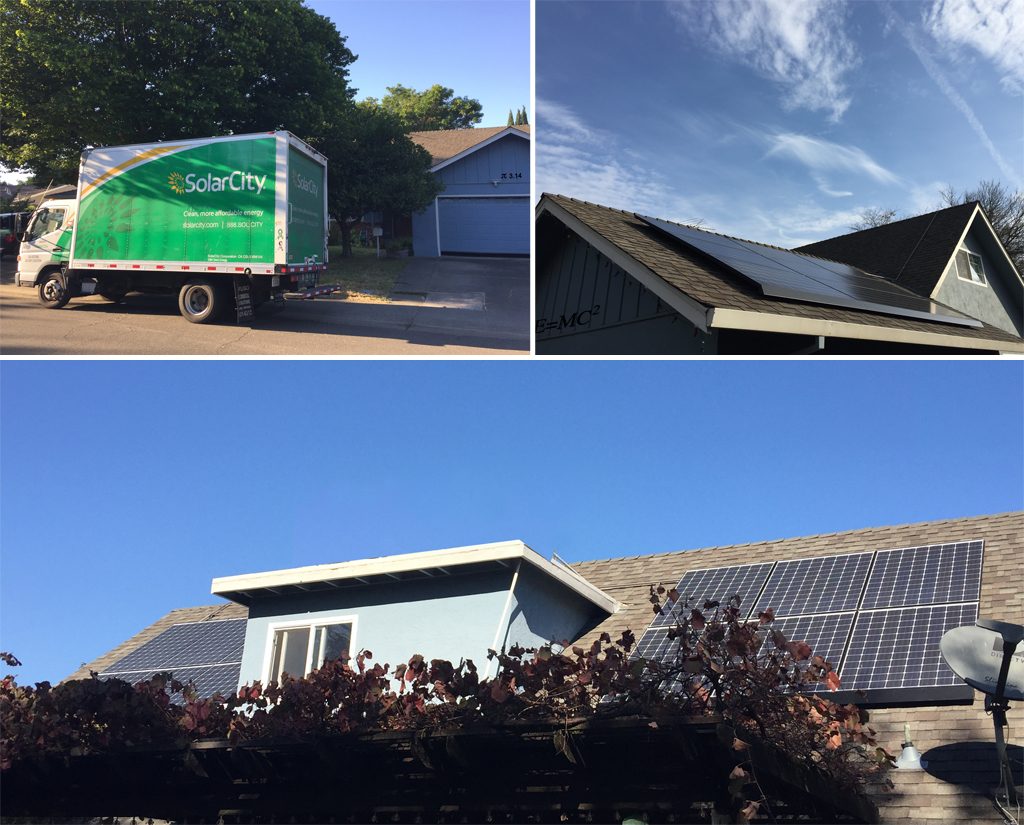
Solar System Electricity Production
The 3 arrays feed into 2 ABB string inverters. The system is spec’d at 6.285 kW, but in the real world we usually see max power of about 4.7 kW on sunny summer days.
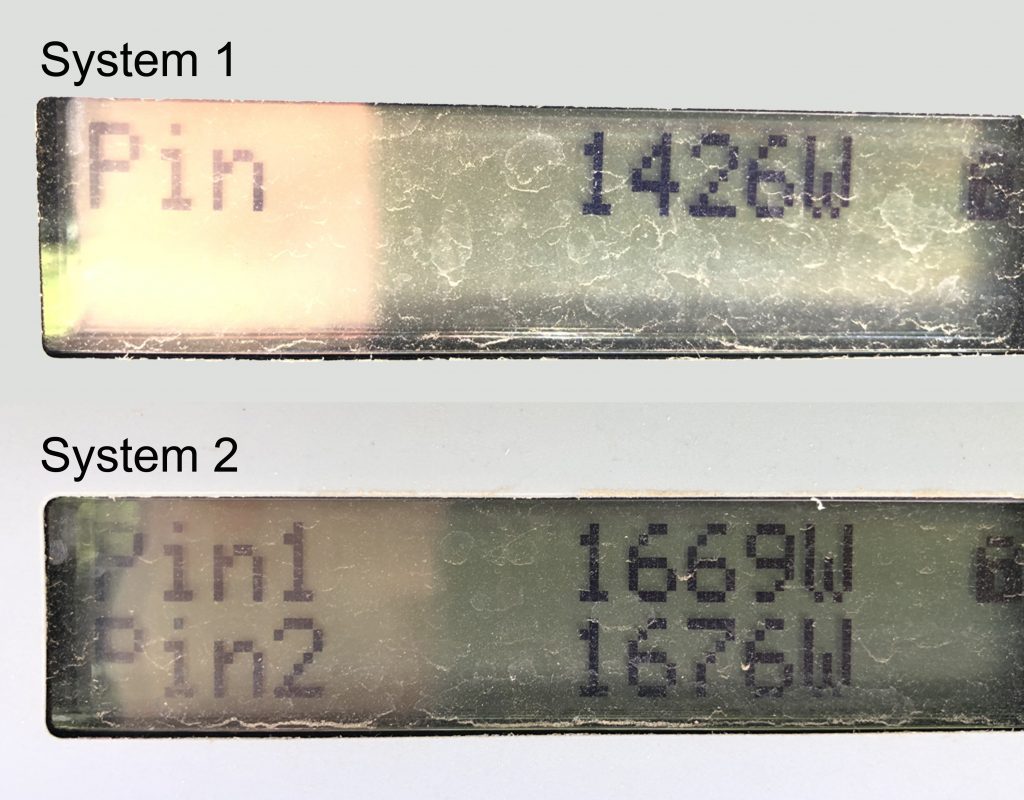
I plotted electricity production for a full year after we started charging our EV at home. From May 2018 to April 2019 the solar power system produced 8400 kWh. The graph below shows how electricity production of our system varied over the year. As you’d expect we saw peak production in May / June, and lower production during winter months. The system produced an average of 700 kWh per month over the course of a full year.
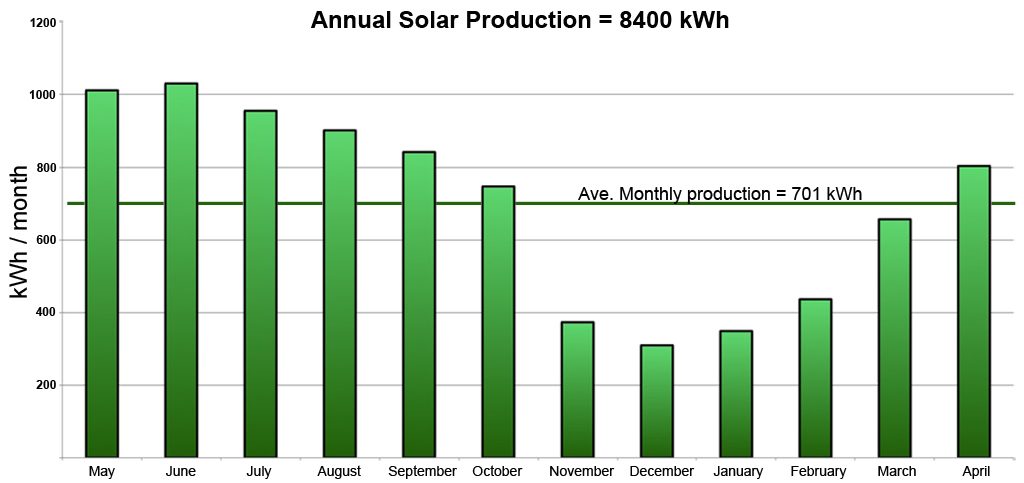
Solar Power Offsets our EV Charging and Home Electricity Use
Our total electricity use for home and EV charging over the same 12 months was just 6500 kWh. We made more electricity than we used. This resulted from three factors: 1) Several planned trips, we were away from home not charging the car and not using home electricity; 2) the Model 3 is way more efficient than our Rav4 EV – I know, stating the obvious here. I expected the 3 to be efficient but was was really surprised at just how efficient this car is; 3) Public charging: I got in the habit of using public chargers with our first EV, and initially used public chargers with the Model 3. I got 500+ kWh for the Model 3 from public ChargePoint charging stations during the first year. I’ve since stopped using public chargers for the Model 3, it’s just not necessary for our driving needs.
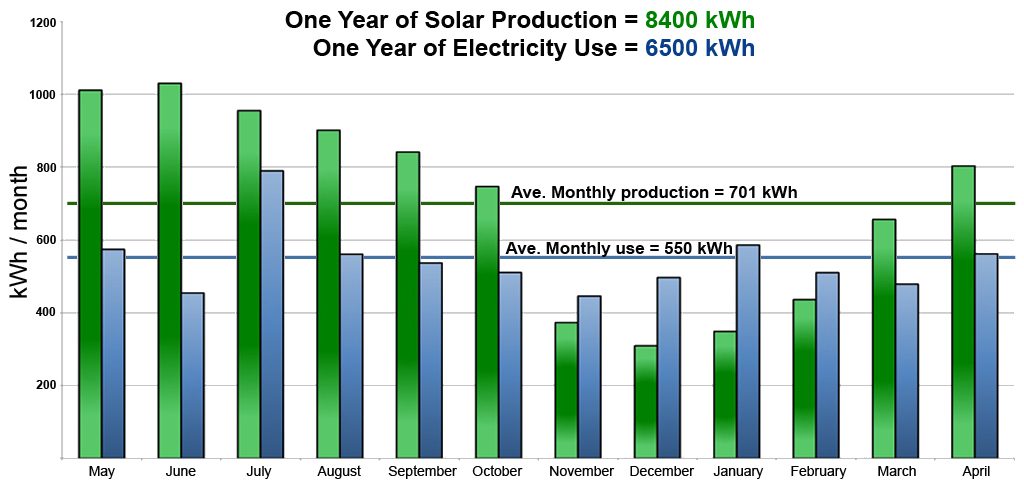
Total home and EV electricity use over the year was 6500 kWh (data from utility). 3200 kWh for our home and 3300 for charging the Model 3. I projected using about 4300 kWh to charge the Model 3 at home. In the end, the Model 3 used a total of 4400 kWh from the wall to drive 17,000 miles over 12 months, as described in an earlier post. But 1100 kWh came from Supercharging on road trips and public L2 ChargePoint stations, so the remaining 3300 kWh came from overnight charging in our garage.
Brief word on daily charging: I set the state of charge (SOC) for our Model 3 at 60%. On an average workday we drive 50 miles, and the battery pack SOC is at 45% at the end of the day. The image below shows driving and charging data from a typical weekday and the spreadsheet on the right shows hourly electricity usage data downloaded from my utility. I set my car to charge at 3AM. The yellow highlighted entries show that 11+ kWh were sent to the car from 3-5AM to charge our car’s battery pack (above background home usage). We drive less on weekends so it takes less energy to charge the car. During a typical week we drive about 300 miles in the Model 3 and a total of 70 kWh is sent to the car during overnight charging. Remember: YkWhMV.
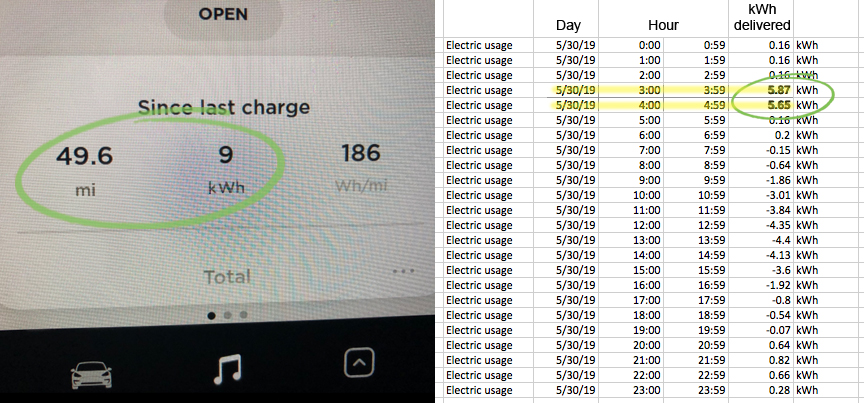
In sum, we made more electricity than we used in the first year: 8400 kWh produced, 6500 kWh used. That works out to an average of us making about 5 kWh more that we used every day. I expect production and usage to be a closer match in the coming year because we haven’t planned extended trips away from home, and I no longer use public L2 charging for the Model 3.
Bottom Line: We Are Saving $$$
So, what’s the bottom line? We paid nothing to charge our car at home and nothing for home electricity use. The solar power system produced enough electricity to cover our needs. At our annual true up we received credits; the system generated enough electricity over the year to cover electricity use for EV and home.
Buying our solar system was like pre-paying for car fueling and home energy. Our system cost $16,691, after rebates. Over time the money we save on monthly bills will pay for the system and more. Our Model 3 replaced a Toyota Prius that we used for the same commute. We paid $1100 a year for gasoline to drive the Prius (and a bit more for engine oil, filters etc). By driving electric, and producing electricity we are now saving $1100 a year in car fueling costs. We are also saving $700 a year that we would have paid for home electricity. In total we saved $1800 this year in car fueling and home energy costs. At that rate of savings our solar system will pay for itself in 9 or 10 years. After that the system will continue generating power and paying dividends.
Note: we pay money to charge our Model 3 at Tesla Supercharger stations during longer trips. During the first year we took advantage of the Model 3’s long range coupled with the Supercharger Network to go to Lassen Volcanic National Park, Montgomery Woods State Natural Reserve, Lake Tahoe several times, Mammoth Lakes, San Diego, and Kings Canyon National Park. We paid $105 dollars for Supercharging on those trips totaling over 2700 miles.
Bottom Line 2: Solar Panels Cut our Carbon Footprint
We produce as much clean energy as we draw from the electrical grid. We aren’t always directly using the clean energy we produce, but we achieved Net-Zero use from the grid during the first year. By installing solar panels on our roof, we cut our household carbon footprint in half. By driving electric cars – with one charging at home – we cut our transportation carbon footprint by nearly 75% in comparison to the gas-powered cars we used to drive. Transportation and residential power together make up nearly 60% of green house gas emissions in the U.S. Every bit helps.
We Need the Electrical Grid
The electric grid takes our solar-generated electricity for others to use when we aren’t using it, and is there to provide us with electricity when we need it, and we need it every day.
The increasing number of EVs on the road obviously require charging from a stable grid. And it should be pointed out that among the advantages of battery electric over gas-powered cars, charging an EV generally produces less emissions year over year, while a gas-powered car is locked in to a specific MPG for life. This results from the long-term trend of the electrical grid getting cleaner as natural gas replaces coal as a major source of energy, and as more renewable sources are used to produce electricity for our grid.
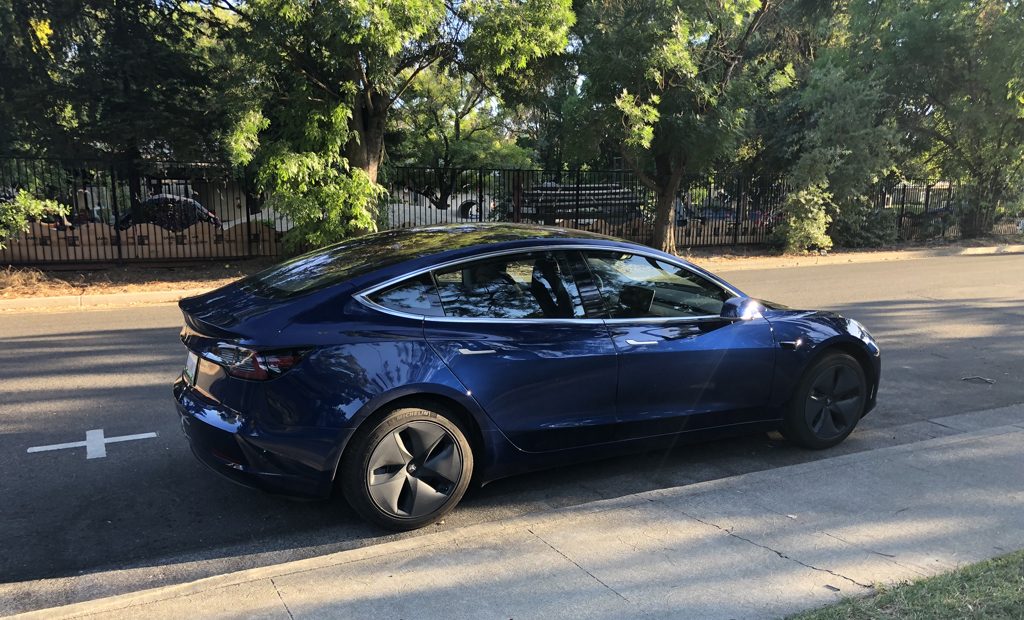
The addition of residential solar power to our grid must be properly managed. Utilities are concerned about their ability to take and safely distribute residential solar power in regions where many homeowners generate their own power. For example, Hawaii’s electric companies (HECO) were slow in approving new solar installations because of their concern about managing the high proportion of home owners making solar power (11% in 2015). HECO studied the issue in partnership with SolarCity and the National Renewable Energy Laboratory (NREL is a division of the U.S. Department of Energy), and concluded that they could safely double the amount of residential solar on their grid.
The NREL and others continue to study this important issue. We all want a cleaner grid and cleaner air, and we need that as soon as possible. Many states have established long-term goals to drastically cut carbon emissions from electricity production. Wind and solar are potential sources of energy in some regions, but significant challenges remain in dealing with intermittent sources of power that can vary on an hourly, daily, and monthly basis. Storage of excess energy in battery packs for later use is one approach for dealing with this issue, and the storage can occur on a small scale or a large utility-scale. As an example of small scale, we plan to install a battery storage system in our house to store excess electricity made by the solar system during the day and use that stored energy to charge our car at night.
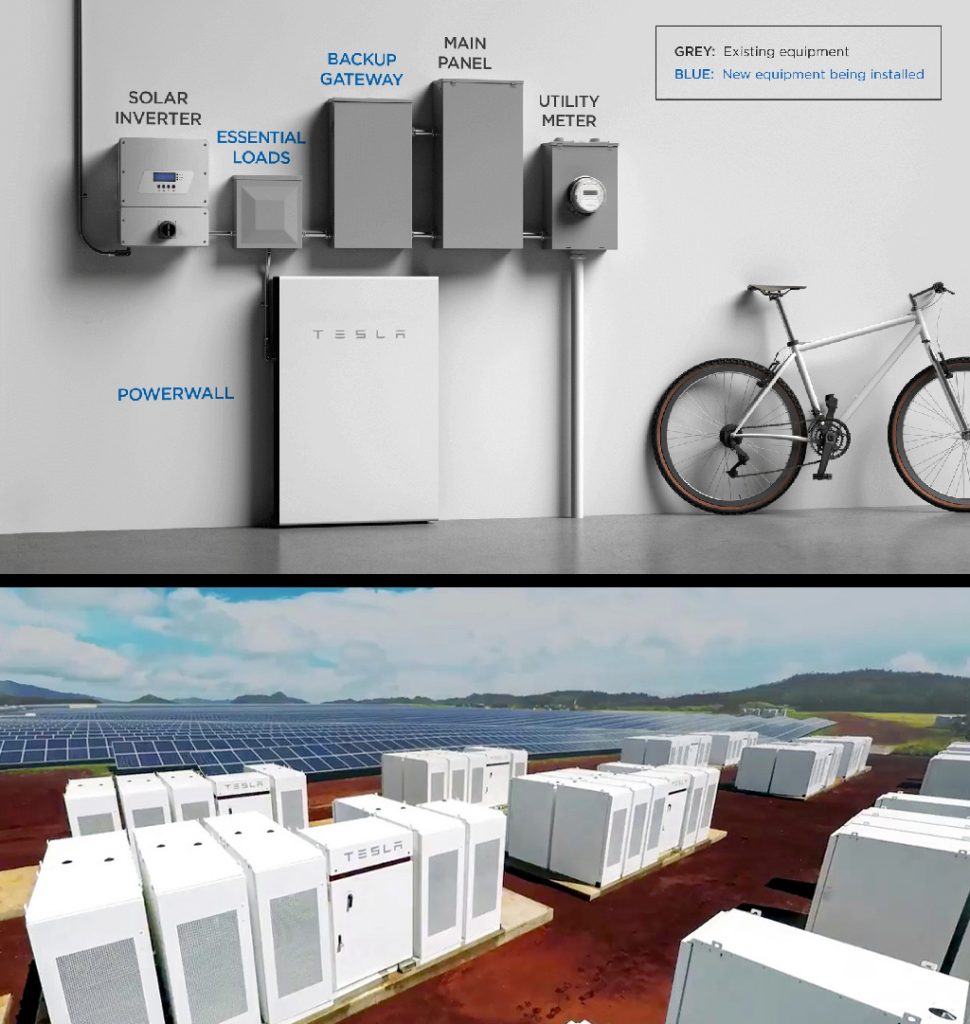
Utility-scale energy storage systems using batteries are operating in Australia, Kaui, and other locations. Other means of storing energy using various technologies have been developed. Integrating multiple sources of clean energy to reliably meet demand day in and day out is the prime challenge. The NREL is just one organization working to meet that challenge. Their mission is to “advance the science and engineering of energy efficiency, sustainable transportation, and renewable power technologies and provide the knowledge to integrate and optimize energy systems.” I have confidence in the ability of our scientists and engineers to meet this challenge.
Work Remains on the Home Front
Our home heater and hot water heater are powered by natural gas. We’ve been averaging over 400 Therms of natural gas per year, which is a significant amount of energy. Our solar system cut our carbon footprint in half, but the other half remains…. so we are looking into heat pump water heater system to cut our natural gas use. We continue working on energy savings wherever possible… this is a work in progress.

